Encountering the World of Box Making
As you explore the world of craftsmanship and your creativity, you will find the art of box-making. A skill that is often the doorway to mastering woodworking.
This involves fashioning boxes with both utilitarian requirements and aesthetic appeal. Box creation is rewarding since you recoup your efforts with a useful item or a handmade gift.
Intriguingly, jewellery box-making techniques are not just about creating a box. It’s about gaining insight into the nuances of woodworking. Despite the small scale, the skills you master can really propel your abilities. Your abilities improve as you study design, tools, shaping, assembly, and perfect finishing.

Why a Comprehensive Guide is Necessary
As a beginner learning how-to make boxes, it is both an art and a science; the task can appear daunting. A vague or incomplete guide can result in frustration as a newbie navigates the building.
A thorough tutorial progresses beginners from the basics to more complex projects. It stems from understanding the novice’s perspective and provides instructions that remove guesswork.
They can discover the artistry that evolved, exploring a variety of joinery techniques. In short, a comprehensive guide empowers you with knowledge to take on a new hobby.
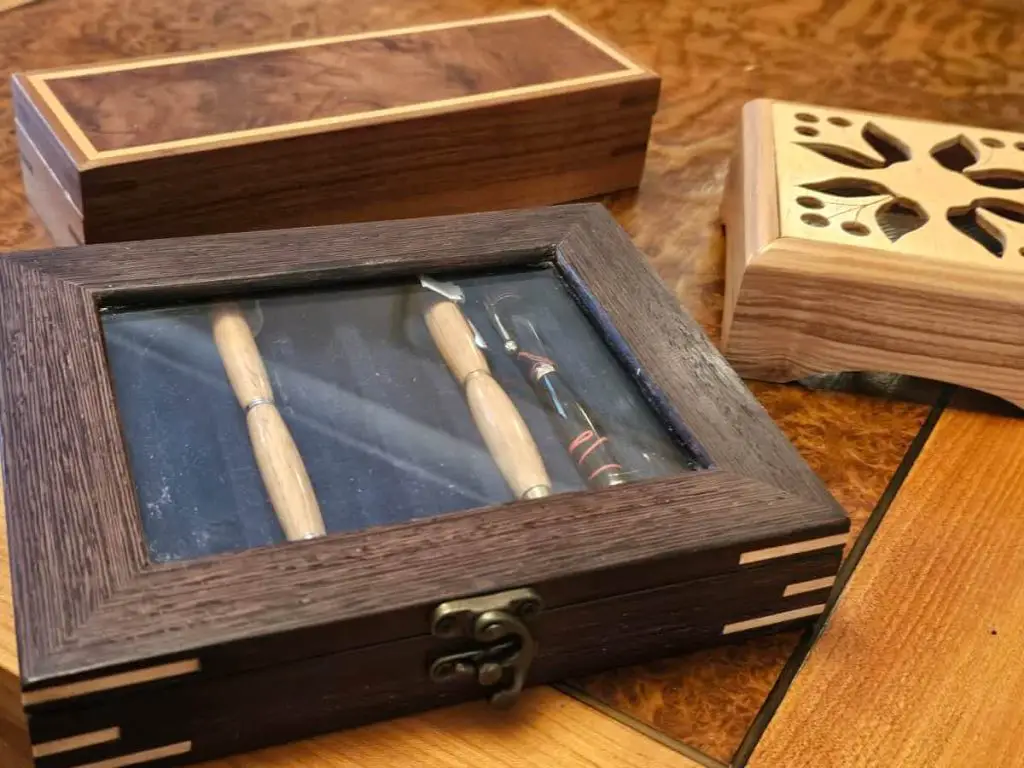
Diving into Basic Box Making
Understanding the Fundamentals
Knowing the fundamentals sets the groundwork. It’s about understanding wood types, mastering basic joinery, and grasping design concepts. As they say, a strong foundation builds an enduring structure.
It demands a solid grasp of basic principles and methods, for creating various types of boxes. For joinery, you may encounter butt joints, miters, mortise and tenon joints, dovetails, and box joints.

Each joint varies in complexity and strength. For example, butt joints, though simple, are a practical option for many projects. They entail joining two pieces of wood by merely ‘butting’ them together. The interlocking nature of dovetail joints makes them stronger and more attractive.
Selecting the right type of wood depends on the intended use of the box, budget, and the desired aesthetic. Hardwoods like oak, walnut, and mahogany are popular choices. Each type of wood has unique properties for the final product.
The right tools are an integral part. Basic tools like measures, squares, saws, chisels, planes, clamps, and sandpaper are essential. More specialized tools like a jig may be needed depending on the complexity of the design.
Common box designs often include sliding-lid boxes, hinged boxes, and lift-off lid boxes. A sliding-lid, involves creating grooves along the inner side walls for the lid to slide in and out. But, a lift-off lid requires carefully creating an accommodating lip that the lid will rest on.
Understanding these elements enhances the knowledge needed for success. Knowing how each piece affects the structure helps craft boxes that are functional and appealing.
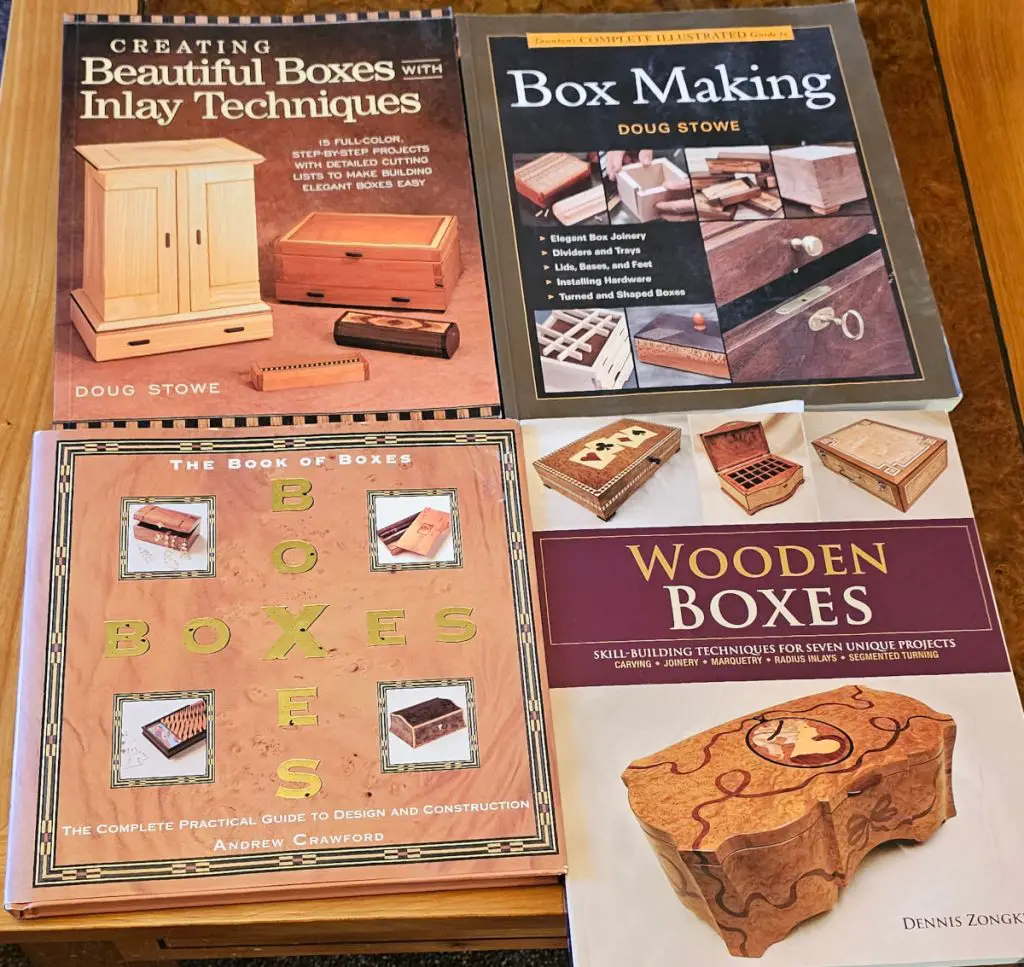
Exploring DIY Beginners Books
Beginners’ books offer a gentle start. They introduce you to essential techniques, practical exercises, and step-by-step projects. They’re your guiding hand on this exciting journey.
However, it is crucial that beginners select the best book to guide them on this journey. Based on my expertise as a box maker and my interaction with these woodworking books, they are easy to understand. They foster an atmosphere that will incite curiosity, learning, and refinement in beginners.
Remember, the most important thing is that you enjoy the process. Never forget the joy and satisfaction that creating something with your own hands can bring. Have fun with your building endeavours!
1. Tauntons Complete Illustrated Guide to Box Making
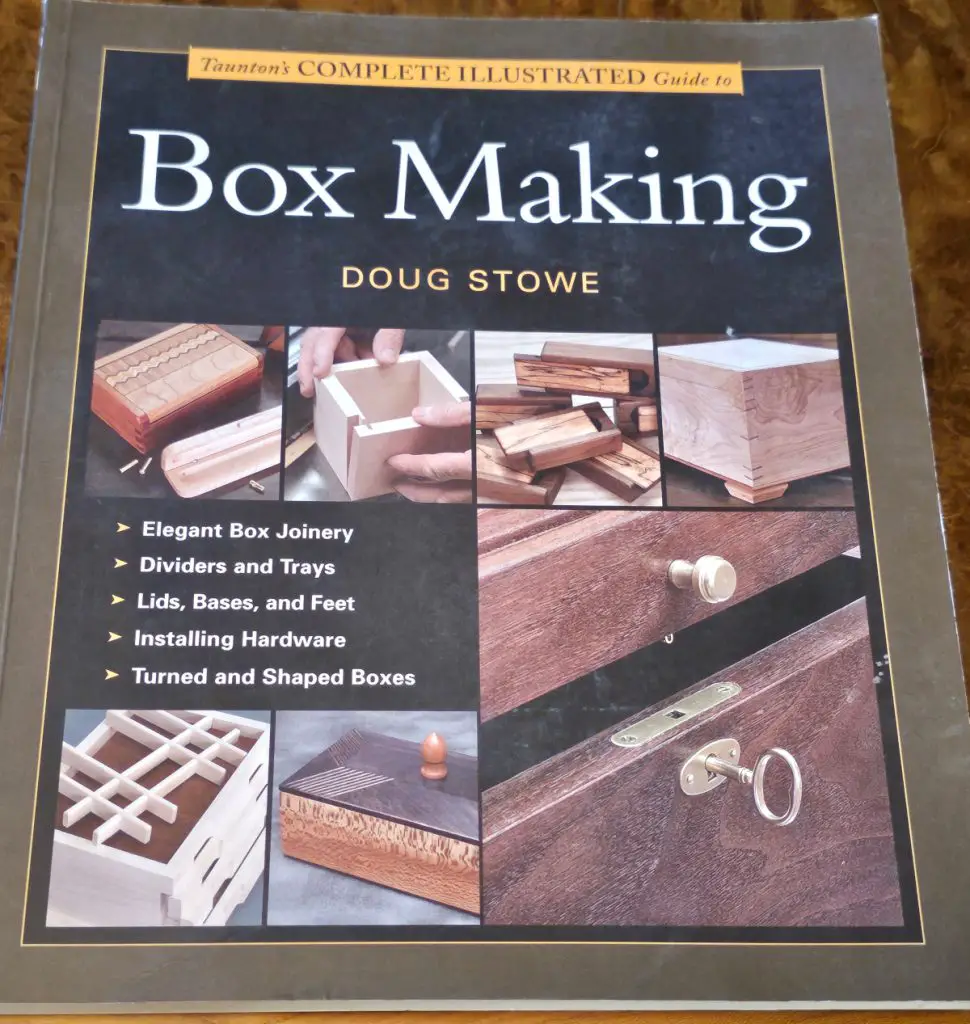
“Taunton’s Complete Illustrated Guide to Box Making” is an inviting entry point. It’s a pictorial reference with extensive coverage of box-making methods. It boasts over 500 color photographs and drawings showing you each step.
- Comprehensive Content: It offers pictorials for various box-making techniques, a true learning treasure.
- Depth of Information: Over 500 colour photographs brilliantly illustrate every process.
- Organised Structure: The book is structured for quick reference, saving precious time.
- Ample Variety: Learn how to craft joined, turned, and bandsawn boxes.
- Added Value: Gain knowledge on decorating boxes, making it more than just a building guide.
Recommended for: Individuals looking to master basic to intermediate box making skills.
2. Book of Boxes: The Complete Practical Guide to Design
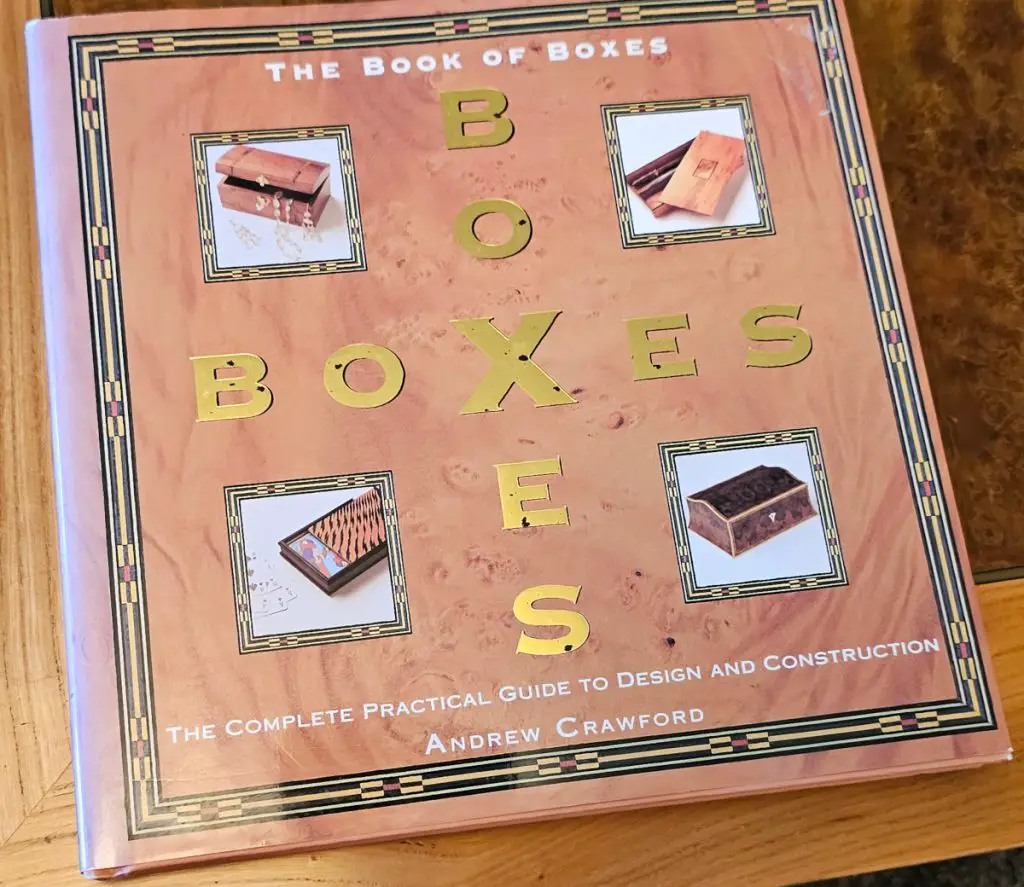
“Book of Boxes: The Complete Practical Guide to Design and Construction” by Andrew Crawford serves as a practical oracle. It encompasses design and construction methodologies, crafting the perfect box from scratch. An incredible beginner’s complete guide intricately penned by an expert box maker.
The book covers ten box design ideas, preparing the reader for challenges that might come. Emphasis on techniques and finishing methods, transforming a novice into a confident craftsman.
- Thorough Process: This book covers every aspect, from planning to finishing.
- Practical Focus: Inspiring and beneficial, it teaches skills to last a lifetime.
- Troubleshooting Advice: Tips and tricks to diagnose and fix common issues.
- Diverse Projects: Boxes range from keepsake boxes to jewelry chests, allowing skill building.
- Materials Overview: Selecting, milling, and working with woods and other materials is explained.
With practical instruction and inclusive content, it provides an excellent foundation. Budding woodworkers will learn sound techniques through diverse content and troubleshooting advice.
3. Creating Beautiful Boxes With Inlay Techniques
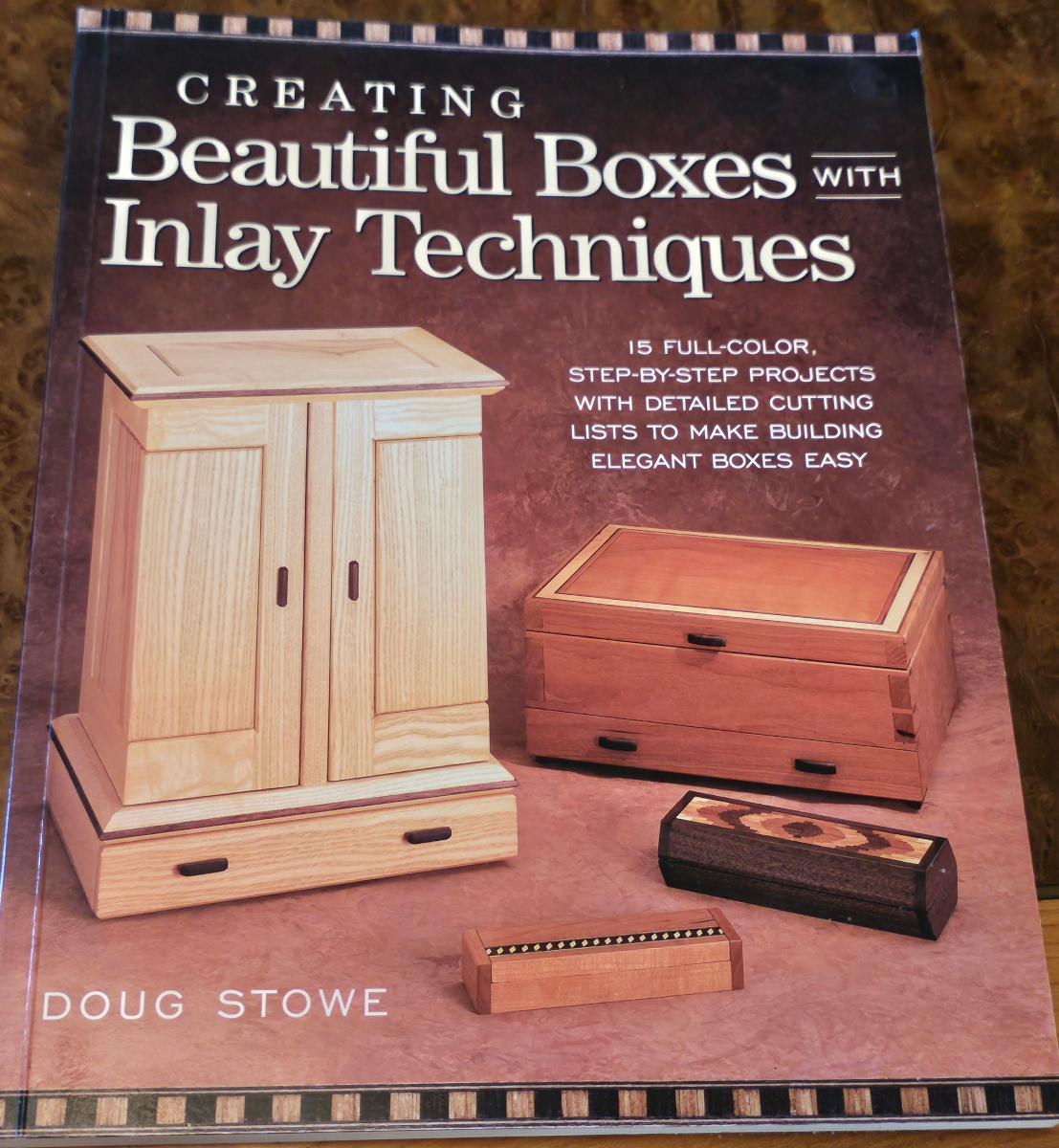
“Creating Beautiful Boxes” by Doug Stowe is a gold mine for anyone interested. It shows how to create intricate inlays and details to make your box ‘a thing of beauty forever’. The book spans multiple chapters, each meticulously structured to elaborate different inlay techniques. Importantly, the necessary materials and tools are extensively outlined.
Stowe excels in laying out complex processes in a simple and understandable manner. This implementation makes things less frightening, which is a significant book strength. The book may be overwhelming in the earlier chapters, assuming basic woodworking knowledge. It might be best for absolute beginners to grasp the basics first before diving into this book.
Here are the top 5 attributes or features of the book that stand out:
- Simple Language: Thorough instructions guides beginners in learning about box making.
- Detailed Inlay Techniques: The book provides a selection of different methods. The in-depth descriptions cover an array of choices, offering a vast creative scope.
- High-quality Visuals: The attention-grabbing photographs and illustrations make the content engaging to digest.
- Tools and Materials: An extensive materials and tools guide on different types available. A critical factor that a novice must know to achieve their desired results.
- Practical Approach: A key feature of the book is its practical approach to teaching. Stowe makes learning more efficient by combining theory with practice.
Will help newbies with knowledge and practical tips peppered with creative images.
4. Making Heirloom Boxes
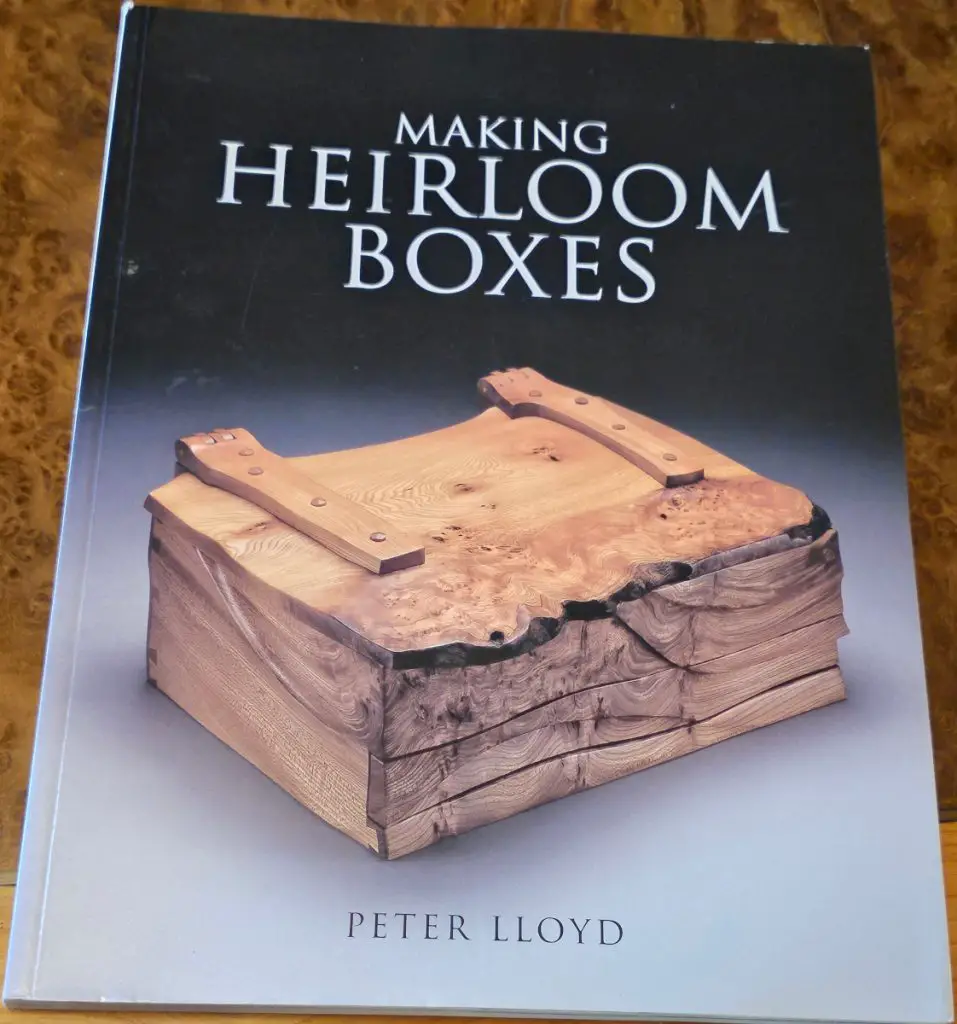
“Making Heirloom Boxes” by Peter Lloyd is a true gem. It shows you how to make boxes that can be passed down through generations. This extraordinary resource is an absolute must-have due to its top features:
- Stage-by-stage Instruction: Lloyd unboxes the process of creating stunning boxes with complete instructions.
- Expert Techniques: The author shares some ideas from his vast experience.
- Project Variety: The book takes you beyond the basic box, offering a diverse range of projects.
- Clear Illustrations: Each woodworking project is accompanied by an easy-to-understand illustration.
- Valuable Advice: Lloyd includes insights into basic tools, materials, and essential strategies.
If you’re an amateur builder eager to hone your wooden box-making skills, this guide is made for you.
5. Making Marvelous Music Boxes
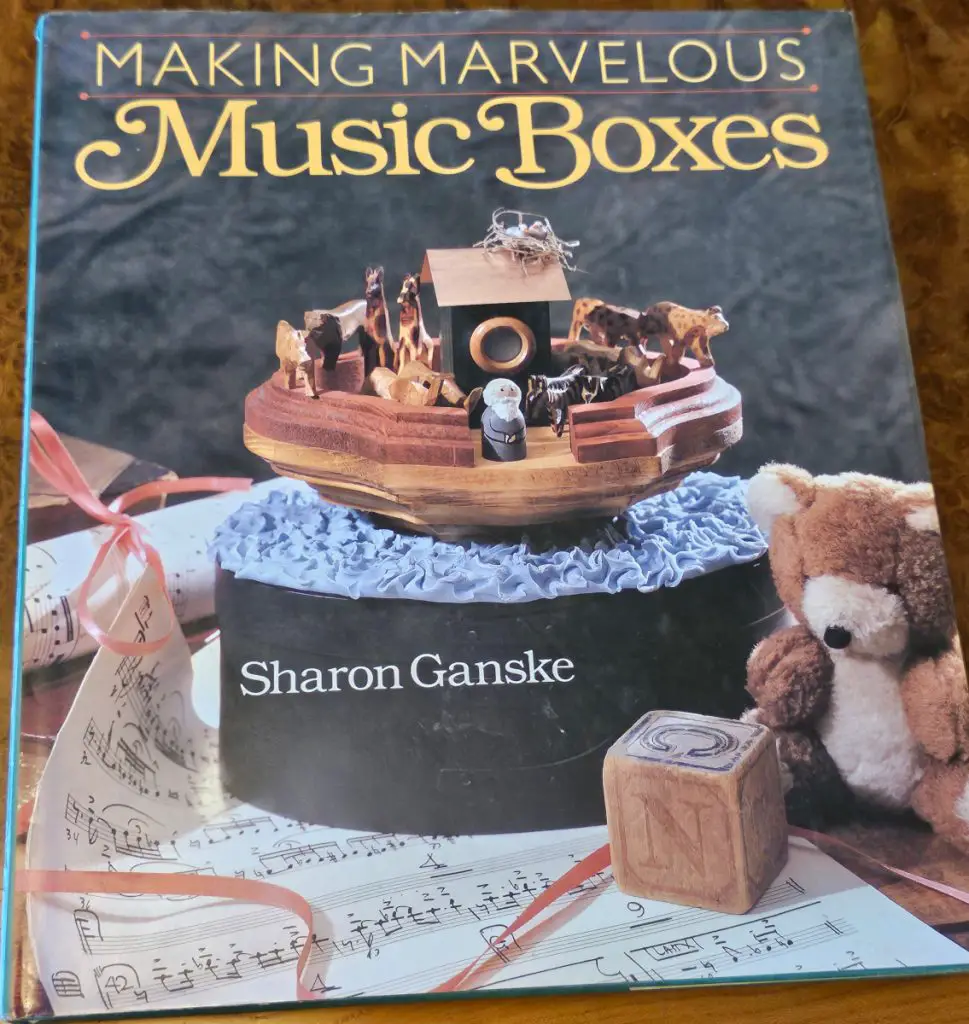
“Making Marvelous Music Boxes” is a fantastic primer for crafters who want to enter music box creation. An intro to different music box components advances towards complex approaches. Tips on incorporating music mechanisms into designs will help novices.
One of the hardback book’s valuable attributes is its simple instructions. Easy-to-follow explanations escort the reader from the simple to complex aspects. Every step is complemented by vibrant colour photographs, aiding readers in visual understanding.
Top 5 attributes of the book are:
- Practical instructions: Making creating music boxes less daunting, the format is easy to follow. Each step is explained in detail, enabling any reader to make sense of the process.
- Limited Visuals: The learning experience would be improved with more high-quality images.
- In-depth subject coverage: From understanding the melody-making process to the intricacies of mechanisms.
- Expert tips: The authors share expert shortcuts and suggestions throughout the book.
- Beginner-friendly: Its simple language and structured approach make it extremely user-friendly. Each chapter builds on the preceding one, assuring mastery for the reader.
Like all resources, it has its weaknesses. The book detailed crafting procedures well, but more wooden music boxes would have helped. It would have made the book more resourceful and inspirational for woodworkers.
6. Wood Magazine: Making Great Boxes
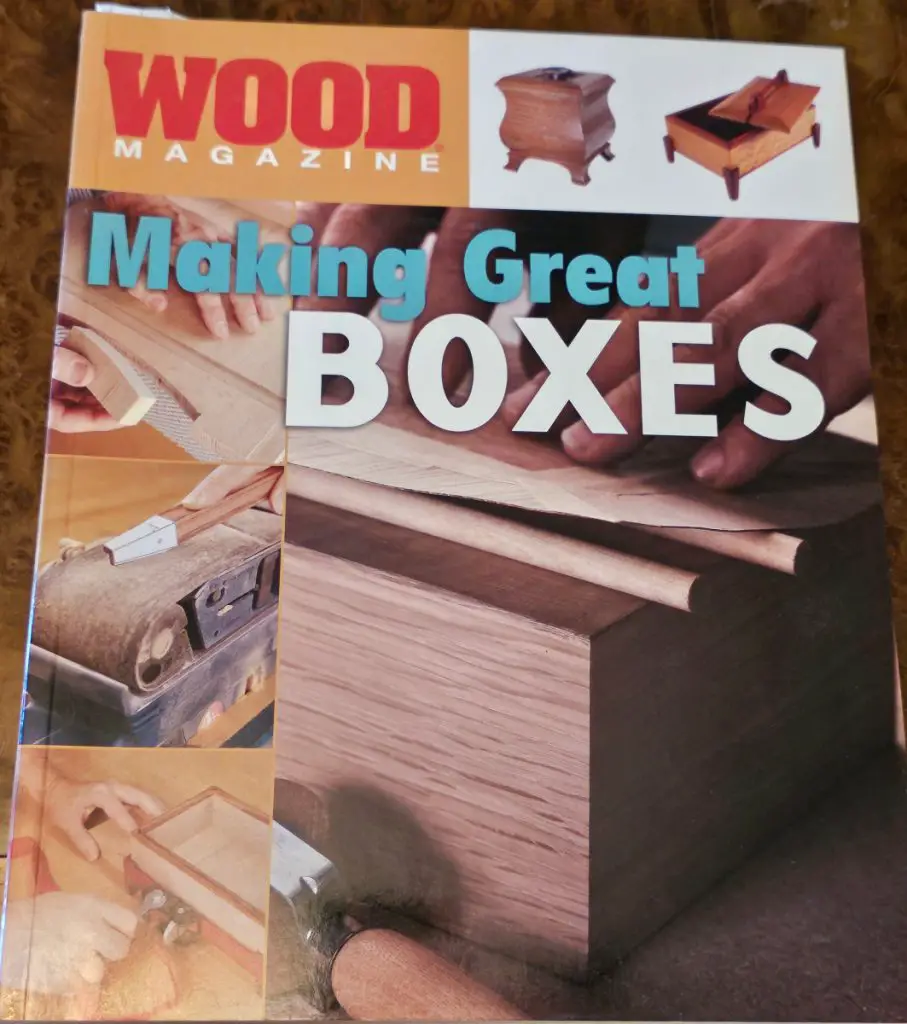
“Wood Magazine: Making Great Boxes” presents an amalgamation of projects with diverse styles. Key features include detailed plans, simple directions, and inspiring box designs. It’s your companion to the art of box crafting.
The extensive content covers lift-off, sliding, hinged, and fitted lid boxes. Readers learn traditional and novel methods that may be used in various tasks. The lack of use and safety of specific tools required to make a box may challenge complete novices.
Top 5 features of the book are:
- Instructive: Each project is broken down into steps so beginners aren’t overwhelmed.
- Vivid Illustrations: High-resolution images paired with text allow readers to visualize the processes.
- Extensive Designs: Design diversity caters to all skill levels, encouraging progression and refinement.
- Comprehensive Techniques: With both traditional and innovative joinery techniques detailed, the book becomes a handy reference tool.
- Finishing Methods: The book’s guidance provides the knowledge to finish projects professionally.
In my view, it earns a spot on every budding maker’s bookshelf, adding value to their new-found hobby.
7. Wooden Boxes: Skill-Building Techniques for Seven Unique Projects
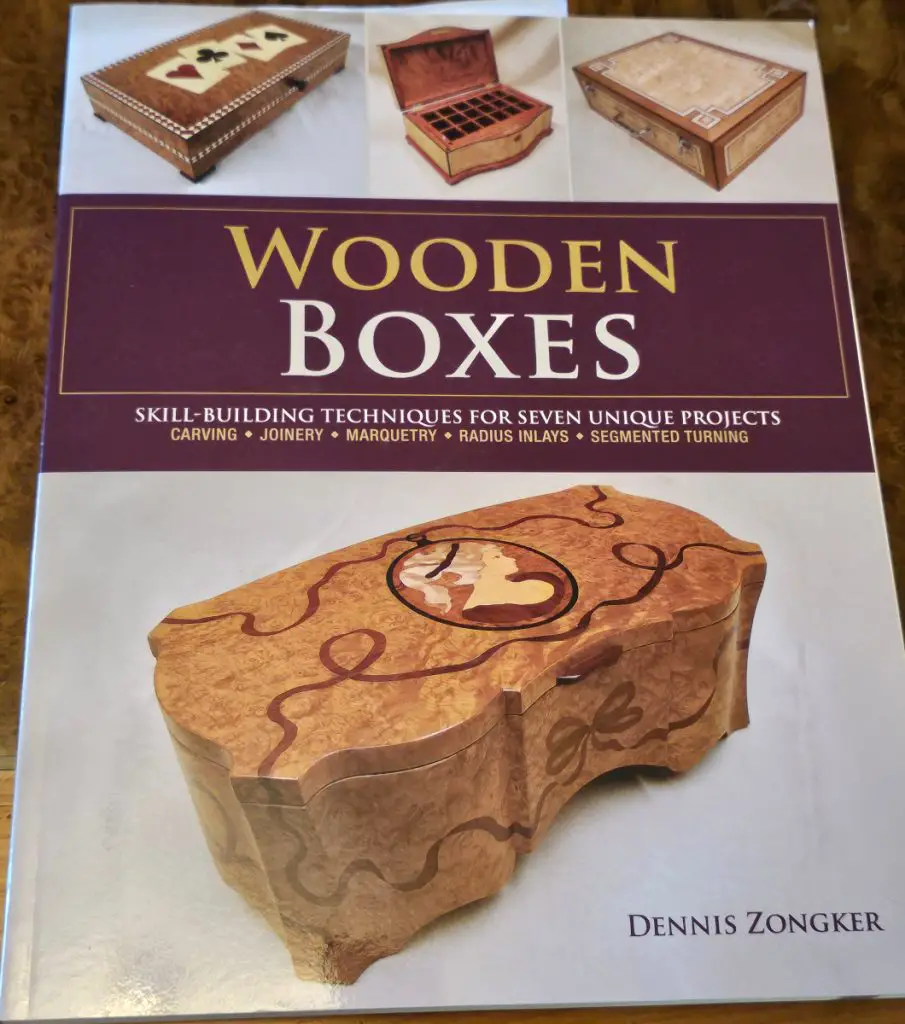
“Wooden Boxes: Skill-Building for Seven Unique Projects” by Dennis Zongker is a treasure trove. This book hones your skills by guiding you to create seven advanced designs.
The book provides detailed, high-quality illustrations and photographs for each project. Making it easy for an intermediate to follow along and grasp each procedure. The seven projects are relatively complex, allowing you to learn and adapt.
Now, let’s dive into the top five attributes that make this book a vital resource:
- Gradual Learning Curve: The projects are arranged from simple to relatively complex. Allowing fledgling craftsmen to challenge themselves while acquiring and refining their skill set.
- Detailed Instructions: Each project explains clear-cut procedures, ensuring a seamless learning process.
- Quality Illustrations and Photographs: These visual aids give a clear view of each step and their resulting outputs.
- Breadth of Projects: Seven projects let beginners experiment with ideas and woodworking techniques.
- Solidifies Skills: Instils the foundational elements – measuring, cutting, joining, and finishing.
It is an invaluable guide that eases you into the art of advanced box making books. Centred on hands-on learning rather than mere theoretical knowledge. Its content, structure, and layout specifically cater to intermediates.
Box & Chest Making Books
8. The Art Of Making Elegant Wood Boxes: Award Winning Designs
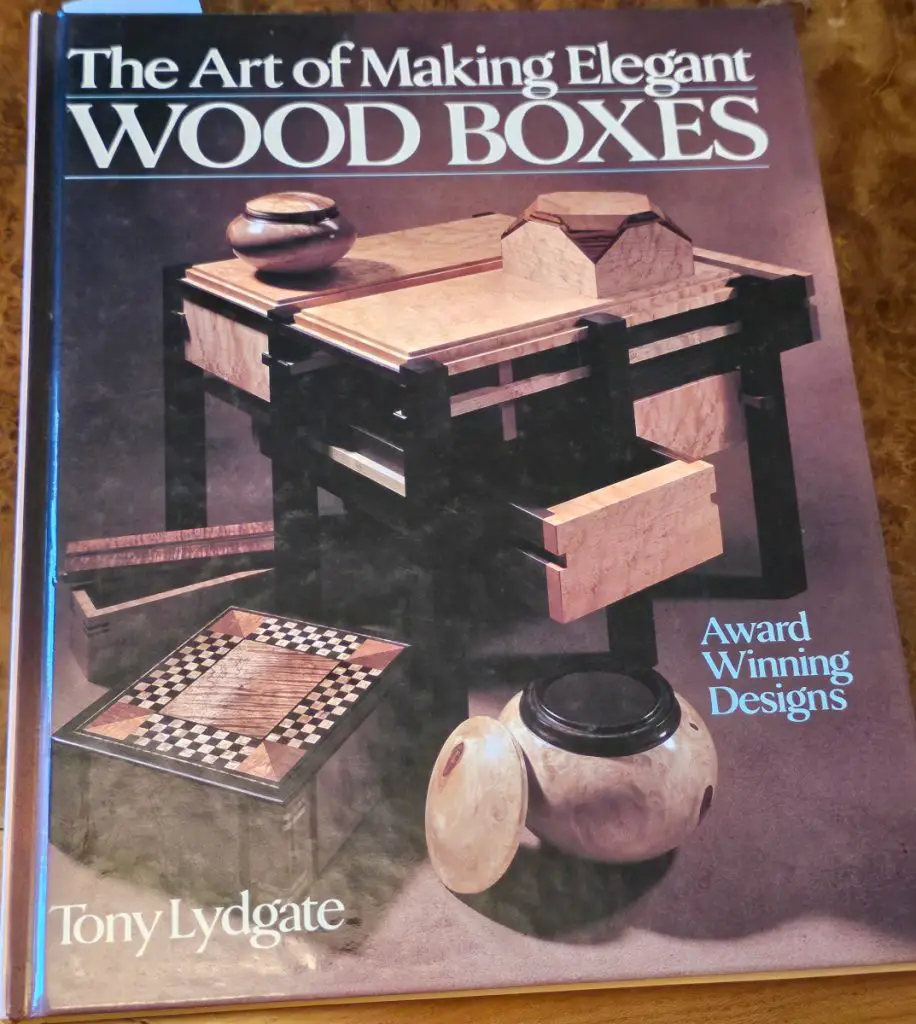
“The Art Of Making Elegant Wood Boxes: Award Winning Designs” takes you on an enlightening journey. New readers of woodcraft will like Tony Lydgate’s clear explanations of the art and science.
A well-structured book, containing instructions that are easy to follow. Vivid graphics and high-quality photos showcasing the art of crafting boxes. Importantly, the book has guidelines for 16 styles of boxes, each unique and refined.
The wide range of topics covered is a significant strength. It covers design ideas, cutting processes, and materials for beautiful boxes. This book covers every crucial topic, from wood grains to choosing the best tools.
Top five attributes of this book include:
- Extensive Coverage: This book provides end-to-end details, perfect for woodworking beginners.
- Good Guidance: Detailed instructions, with pictures, ensure the reader can understand every step.
- Award Winning Designs: Multiple designs provide readers with options for their box-making projects.
- Outstanding Illustration: So readers can clearly visualize the techniques and finished products.
- Expert Advice: The author’s expert perspective found throughout the book provides insider secrets.
In my opinion, this is a valuable resource for anyone interested in creating elegant boxes. The detail, variety, and expertise make it an exemplary guidebook for complete beginners.
9. 52 Boxes in 52 Weeks by Matt Kenny

- Comprehensive Guide: The book covers everything, from fundamental techniques to intricate designs. proving to be a comprehensive resource.
- Clear Instructions: Easy to follow construction process, perfect for readers new to woodworking.
- Diversified Designs: A new box design each week exposes readers to various techniques, boosting skills.
- In-depth Photographs: High-quality images and diagrams featured provide visual guidance that strengthens understanding.
- Structured Path: The format encourages gradual learning, reinforcing new skills while exploring projects.
An excellent resource but not so much a “how to book”. Varied designs and nurturing progression set it apart for developing woodworking skills.
10. Box-Making Basics by David M. Freedman
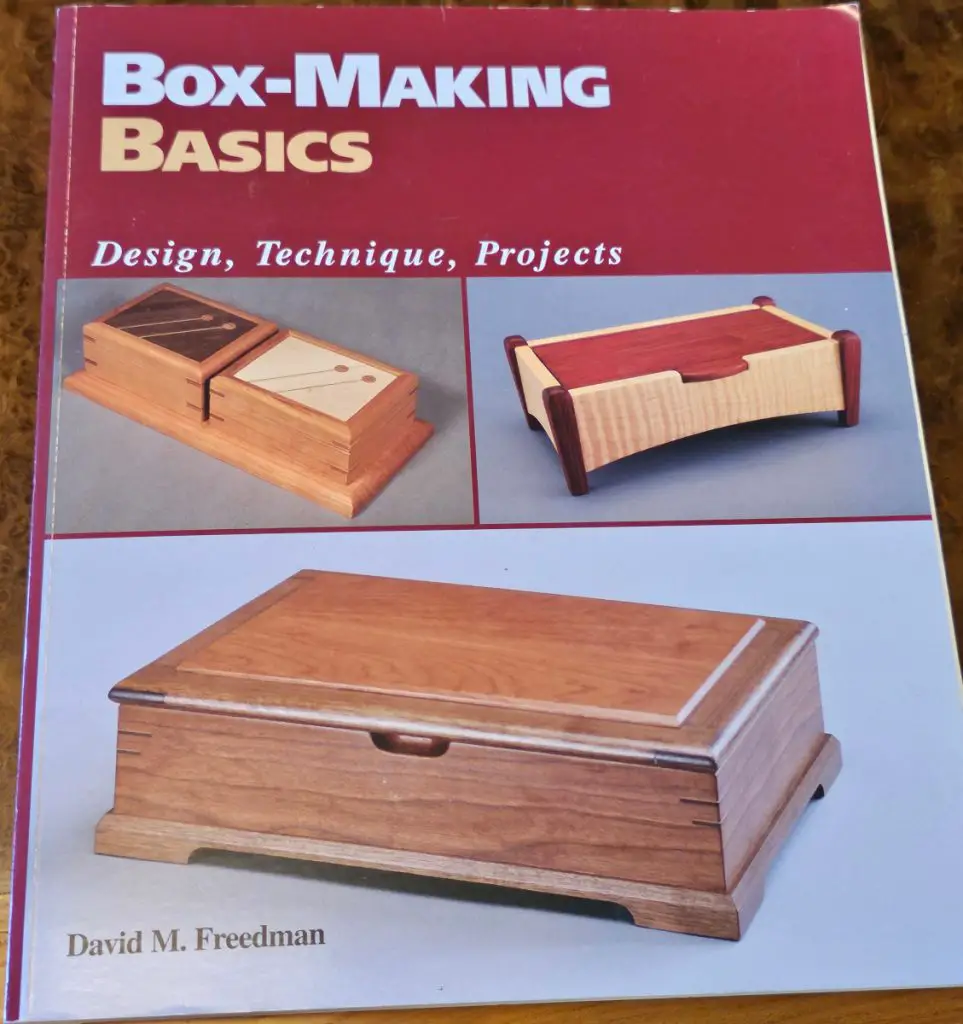
David Freedman’s popular Box Making Basics draws on years of experience that caters well to beginners. Discover essential tips for creating spectacular bookmatched lid panels and using speciality hardware.
It begins by laying down the ‘essentials’ – hard wood selection, design elements, and finishing processes. A deep dive into cutting, glueing, and reinforcing joints, detailing lids, and installing hinges.
Top 5 attributes:
- Comprehensive coverage: The book overviews everything from the initial steps to hardware.
- Step-by-Step Instructions: Sequential instructions simplify concepts, making it a user-friendly guide for beginners.
- Illustrations and Photographs: Black and white visual aids, to understand the process better.
- Diverse Projects: 15 different projects allow learners to practice and apply their learnings.
- Expert Knowledge: Years of experience lend credibility to the book, making it a reliable source.
Shaker oval boxmaking
Believe it or not, there are no good books on Shaker Oval Boxes, even though it is an iconic design. But Gwinnett Woodworkers have a good video, along with lots of others on YouTube if you search. Relax while bending wood with hot water, carving swallow tails, and learning Shaker design.
FAQ (Frequently Asked Questions)
Which tools will I need?
As a beginner, you’ll need a few essentials – a saw, a miter box, a chisel, a couple of clamps, a knife, and a good quality wood glue. As you progress making wooden boxes with hand tools, you’ll add more to your toolbox, like a plane or top router table.
For anyone getting started, there are several essential tools that you should assemble. These common tools speed up and improve precision and craftsmanship.
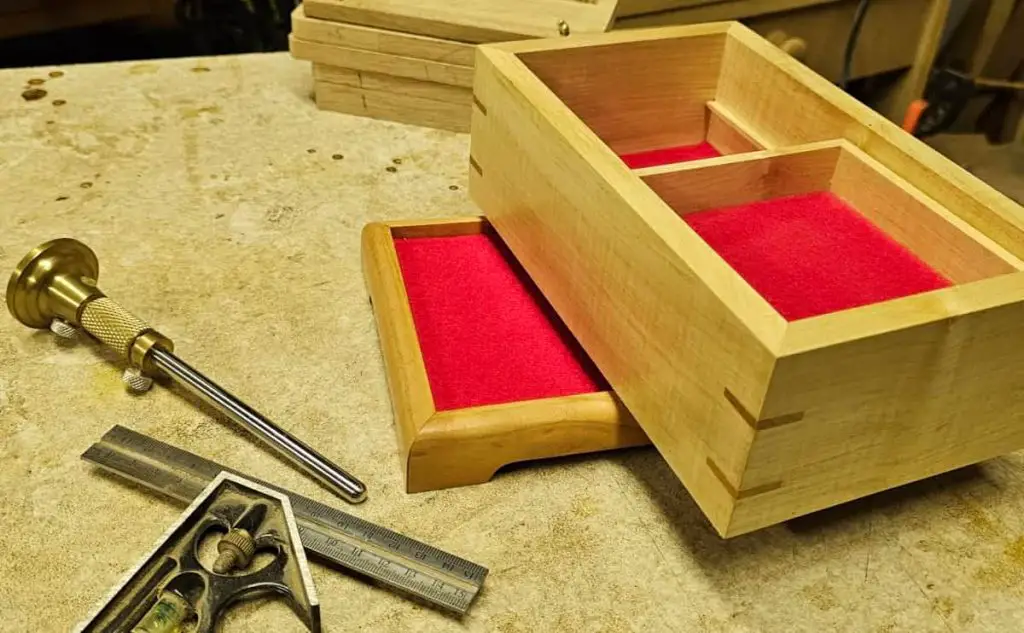
Hand Tools for Box Making:
- Chisels: They are used for fine-tuning joints and removing waste from joints.
- Hand saws: These help in cutting out the shape of the box before refining it.
- Measuring tools: Accurate measurements are integral to the perfect fit and finish of a box. Instruments like rulers, tape measures, and squares must be in your toolbox.
Power Tools for Box Making:
- Table saw: A table saw is highly efficient in making straight cuts for the sides of a box.
- Router: Wood routers help in creating grooves, decorative edges, or recesses.
- Dust extractor: When using power tools, a dust extractor becomes important for keeping your workspace clean.
As you progress, you should get a Domino jointer, a bone folder for creases, and bookbinding brushes or rollers for PVA glue.
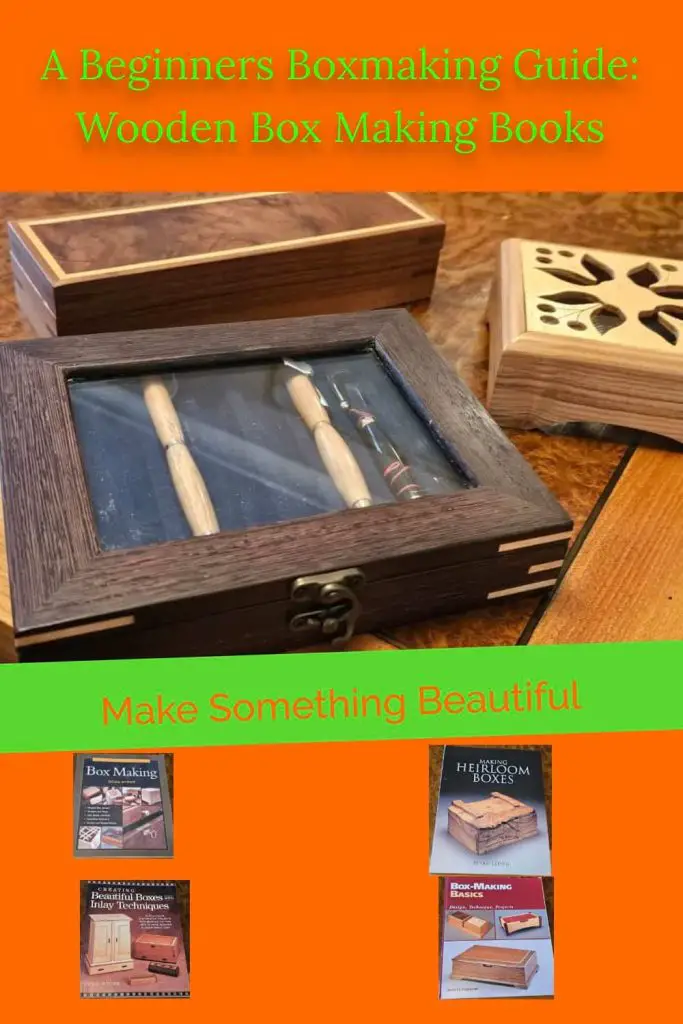
Are there any prerequisites to start box making?
Box building requires no special training, but woodworking basics might help. Sturdy and attractive boxes requires, measuring, cutting, and joining wood pieces. The true prerequisites are patience, attention to detail, and a desire to develop a new skill.
Boxing things up
This craft is less about the knowledge you start with but the dedication you invest in mastering it. It is advisable to start with straightforward designs and grasp the basics first. As your confidence and skill level grow, try more intricate box projects.
The list above offers ideas and inspiration for all levels, even advanced makers. Remember that expertise doesn’t come overnight; it is a craft honed over time. With dedication and persistence, you will see your creations evolve.

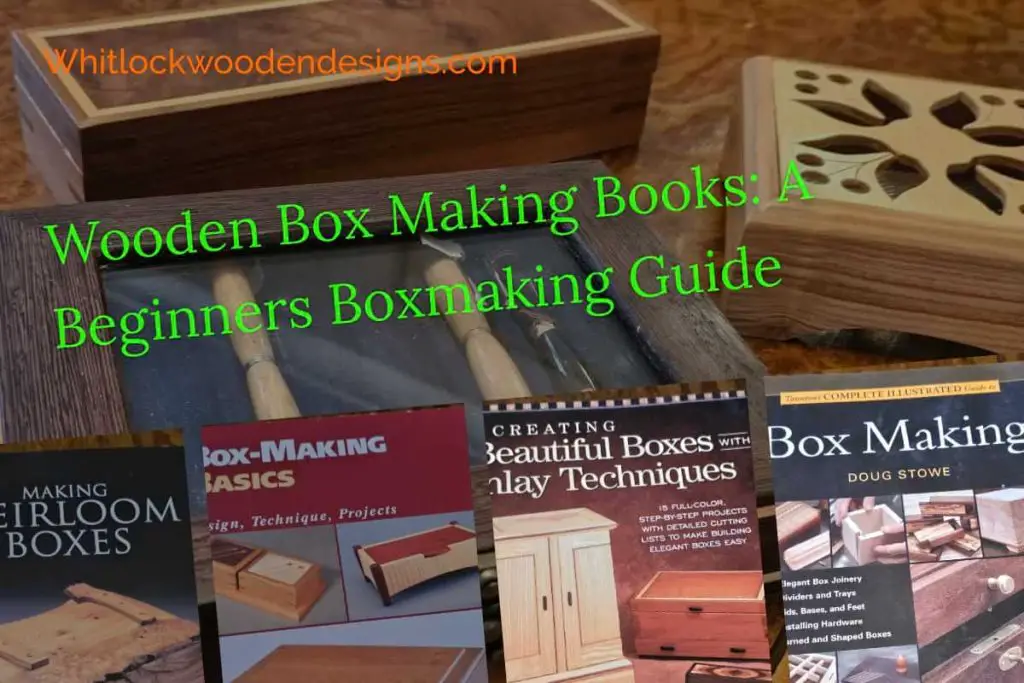
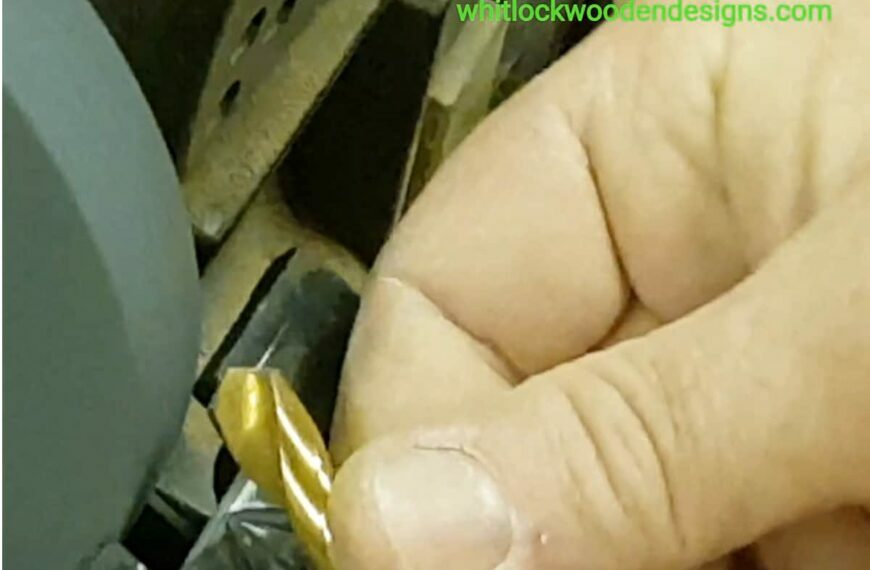
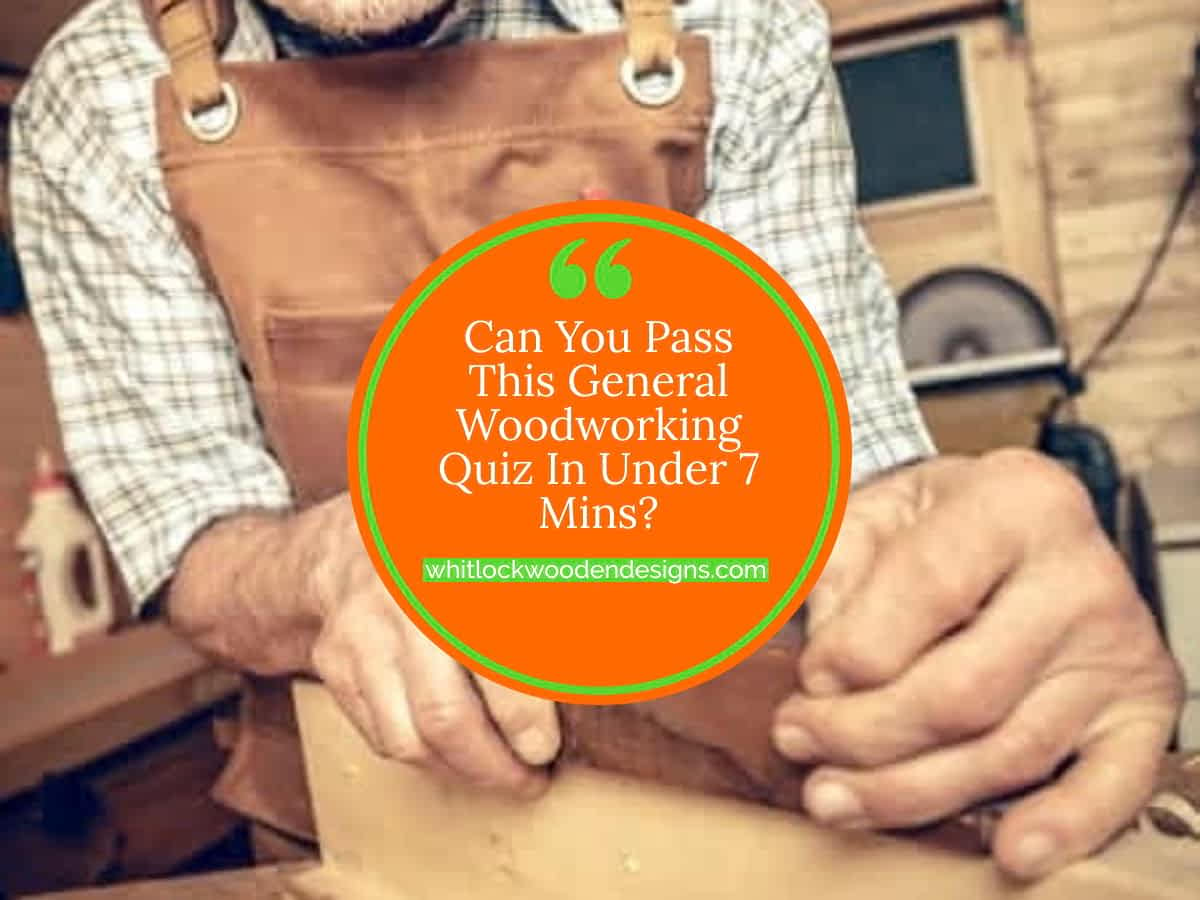
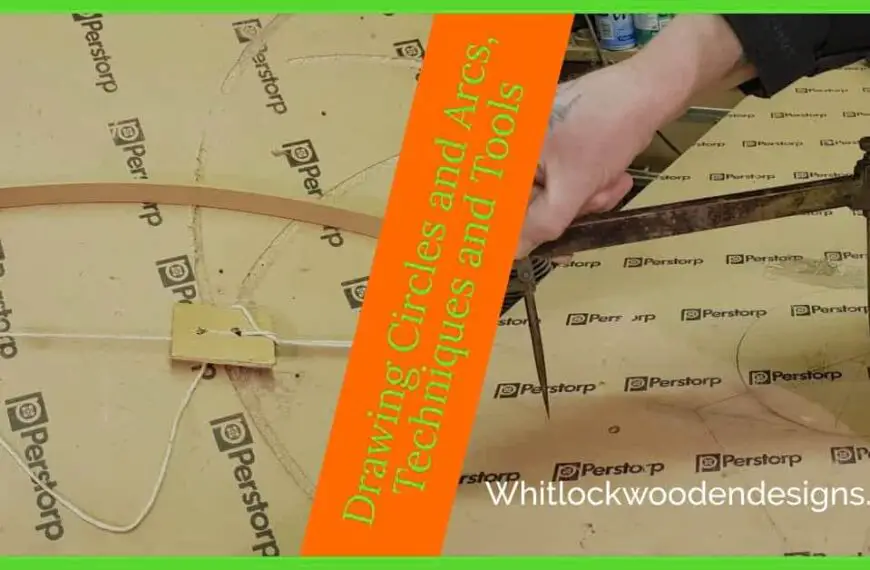
Hi John, very informative, thank you. Have you read Basic box making by Doug Stowe ?
I’ve just bought it . I am going to make my first box for my daughter’s 40th birthday present and I wanted a really basic one. I’m hoping it is ?? All the best and thank you for sharing your knowledge . I’m apprehensive and excited to get started. Oh one last thing. What thickness of wood would you recommend for a beginner ?
Hi Lou, sorry I haven’t read that particular one but it is highly rated, anything by D. Stowe is. The lumber yard can provide things already dimensioned for a price, personaly I prefer to buy waney edge and do things myself. Best tip I can give is make sure you cut square, if not your on a journey learning to fix mistakes (been there, done that). Good luck.